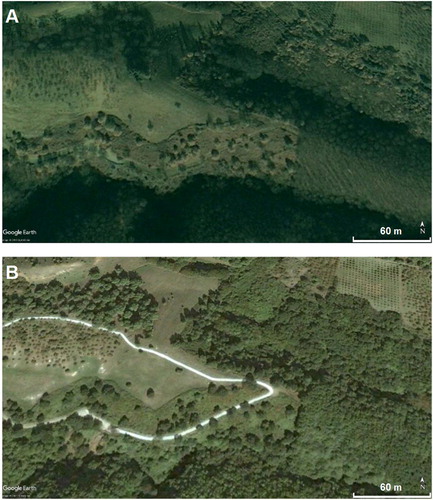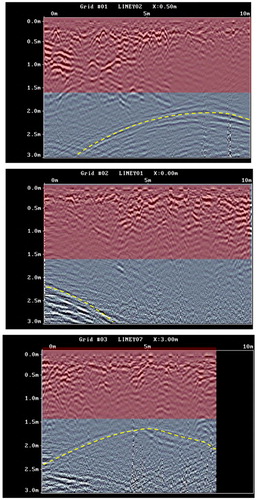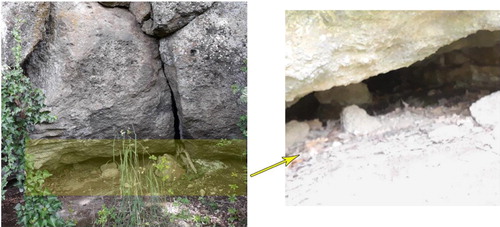Figures & data
Figure 1. Comparison between two satellite images (between August 2004 (A) and November 2004 (B)) from Google Earth® constrains the timing of the construction of the reinforced concrete road.

Figure 2. Area of the ground penetrating radar (GPR) measurements along the road. (A) A close-up is shown of the GPR system. (B) The satellite image with the investigated area (grey rectangle).

Figure 3. Three radargrams show roughly the area of a geological layer (red) at various depths around 2 m and interface between this layer and the curve roof of the subsurface cave (yellow).

Figure 4. (A) The anomaly due to a possible body (green) is clearly below the roof. The depth is owing to a velocity of 0.10 m/ns of the above rough geological layer and is valid to a depth of 2 m. (B) The corresponding depth-slice in which the geometry of the cave (circled) and, in green/yellow, the same anomaly detected by the radargram are clear. The cave entrance was not covered by the ground penetrating radar (GPR) investigation.


